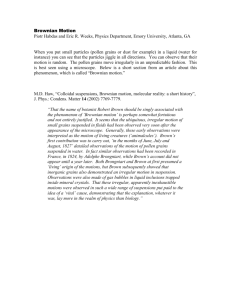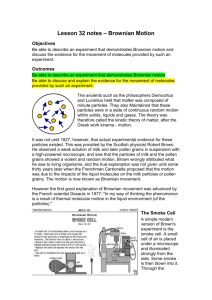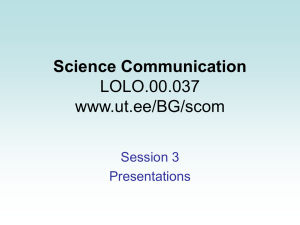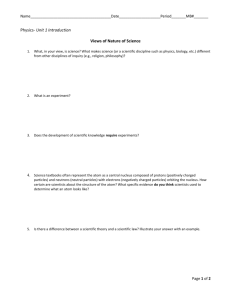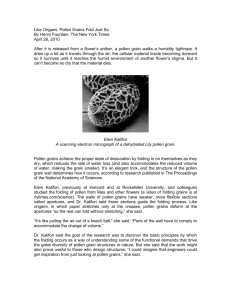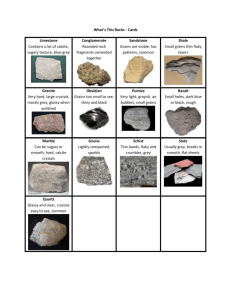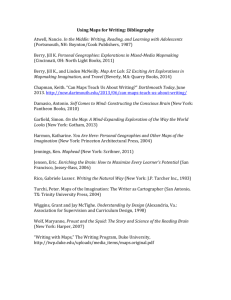Creativity in science
advertisement
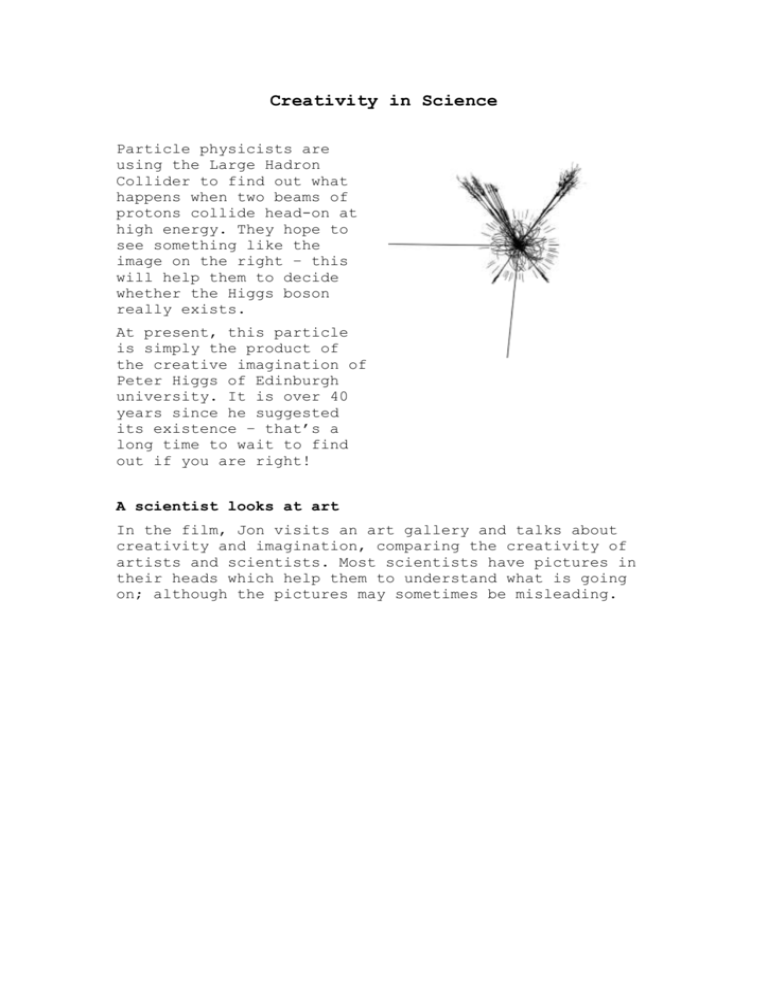
Creativity in Science Particle physicists are using the Large Hadron Collider to find out what happens when two beams of protons collide head-on at high energy. They hope to see something like the image on the right – this will help them to decide whether the Higgs boson really exists. At present, this particle is simply the product of the creative imagination of Peter Higgs of Edinburgh university. It is over 40 years since he suggested its existence – that’s a long time to wait to find out if you are right! A scientist looks at art In the film, Jon visits an art gallery and talks about creativity and imagination, comparing the creativity of artists and scientists. Most scientists have pictures in their heads which help them to understand what is going on; although the pictures may sometimes be misleading. Scientists use their imagination a lot. They make an observation and they wonder, “What might have caused that?” This can lead to a new theory, a way of explaining things. They wonder, “What will happen if …” and that can lead to a new experiment, a new way of finding things out. Here’s an example. In 1827, the botanist Robert Brown was using a microscope to observe pollen grains in water. He noticed tiny specks moving about within the pollen grains. At first, he thought that this might be a sign that these materials were alive – some kind of ‘life force’ kept them moving. However, he tested this theory by using fine grains obtained by grinding up rocks – nothing could be deader than rock. And these grains also moved about. Brown didn’t have an explanation for what we now call Brownian motion. Nowadays all scientists believe that the tiny grains were moving about because they were being pushed about by even smaller particles – the molecules of the water in which they were floating. These molecules must be too small to be seen. Today all scientists accept this explanation of Brownian motion. But it took a great leap of creative imagination to come up with the theory in the first place. Discuss the part played by creative imagination in Brown’s work. Suggest an alternative explanation for Brown’s observations, and think about how you could test it. Draw a picture to show how you imagine the molecules of water might push a pollen grain. Compare your picture with someone else’s. Rutherford’s alpha-particle scattering experiment was an important experiment (performed in 1910) which showed that atoms have nuclei. Find out about the experiment and the imaginative theory that explained the results: What did the experimenters Geiger and Marsden actually see? What picture did Rutherford use to explain the findings? Draw a diagram and explain how it links the experimental observations to the theory of atomic structure.
